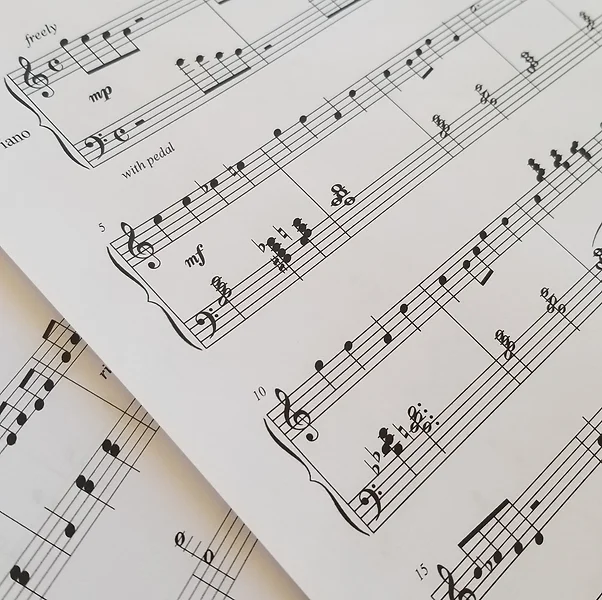Decoding the Language of Symbols in Sheet Music: A Musical Lexicon
 In the intricate tapestry of sheet music, a language unfolds through symbols and notations that guide musicians in their journey to bring compositions to life. Like an ancient script, these symbols convey a composer’s intent, telling a story of dynamics, rhythm, and emotion. Let’s embark on a journey to decode the language of symbols in sheet music, exploring the musical lexicon that transcends time and genres.
In the intricate tapestry of sheet music, a language unfolds through symbols and notations that guide musicians in their journey to bring compositions to life. Like an ancient script, these symbols convey a composer’s intent, telling a story of dynamics, rhythm, and emotion. Let’s embark on a journey to decode the language of symbols in sheet music, exploring the musical lexicon that transcends time and genres.
1. Clefs:
Clefs serve as the musical signposts, indicating the pitch range of the notes on the staff. The treble clef, with its swirling curls, guides higher-pitched instruments and voices, while the bass clef, resembling a backward ‘C,’ directs lower-pitched elements. Understanding clefs is the first step in navigating the musical terrain.
2. Time Signatures:
Time signatures, expressed as fractions, dictate the rhythm and meter of a piece. The upper number signifies the number of beats per measure, while the lower number denotes the type of note receiving the beat. Whether it’s the common 4/4 time or the lilting 3/4 waltz, time signatures set the heartbeat of the composition.
3. Dynamics:
Dynamic markings breathe life into music, indicating the volume or intensity of a passage. From the soft whispers of pianissimo (pp) to the thunderous roars of fortissimo (ff), dynamics allow musicians to paint with sound, creating shades and contrasts that shape the emotional landscape.
4. Articulations:
Articulations influence the character of individual notes or passages. Staccato dots shorten the duration of a note, creating a crisp, detached sound, while legato markings signal smooth, flowing phrases. Understanding these nuances adds a layer of expressiveness to the interpretation of a musical piece.
5. Tempo Markings:
Tempo markings convey the speed at which a piece should be played. Allegro invites a brisk and lively pace, while adagio suggests a slow and stately tempo. Tempo markings, combined with dynamic and expressive elements, contribute to the overall mood and atmosphere of the composition.
6. Key Signatures:
Key signatures provide a roadmap for the tonal landscape, indicating the presence of sharps or flats. They establish the tonal center of a piece and influence the selection of notes throughout the composition. Mastery of key signatures is essential for navigating the harmonic journey within a musical work.
7. Repeat Signs and Codas:
Repeat signs and codas guide musicians through the structure of a composition, indicating where to revisit sections or skip to specific points. These symbols create a roadmap, ensuring that the musical journey unfolds with precision and coherence.
8. Fermata:
The fermata, resembling an eye-catching pause sign, indicates a prolonged pause on a note or a rest. It allows musicians to add a moment of suspense or contemplation, injecting a sense of individuality into the interpretation.
In conclusion, the language of symbols in sheet music is a profound and nuanced means of communication among musicians. Like a shared code, these symbols bridge the gap between composers and performers, allowing the magic of music to be preserved, shared, and perpetuated across generations. As musicians decipher and interpret these symbols, they breathe life into the notes, transforming the black-and-white pages into a vibrant and evocative sonic landscape.
